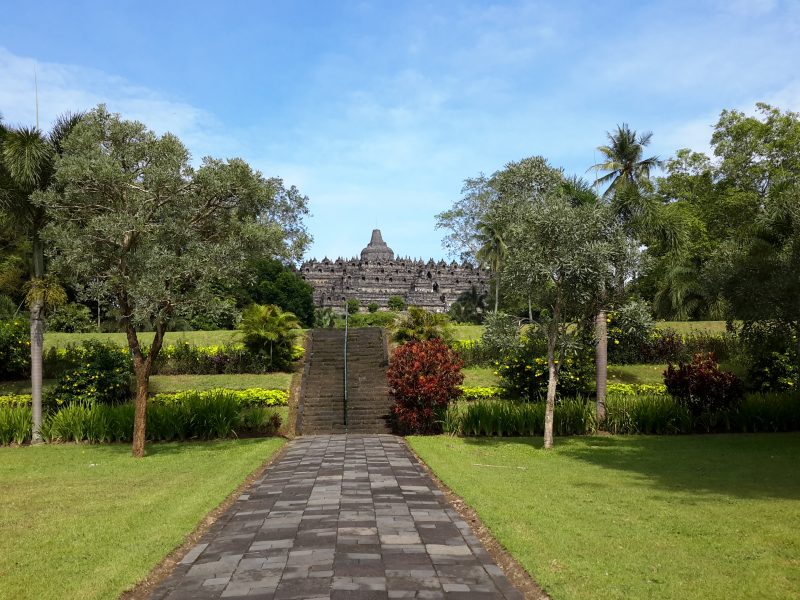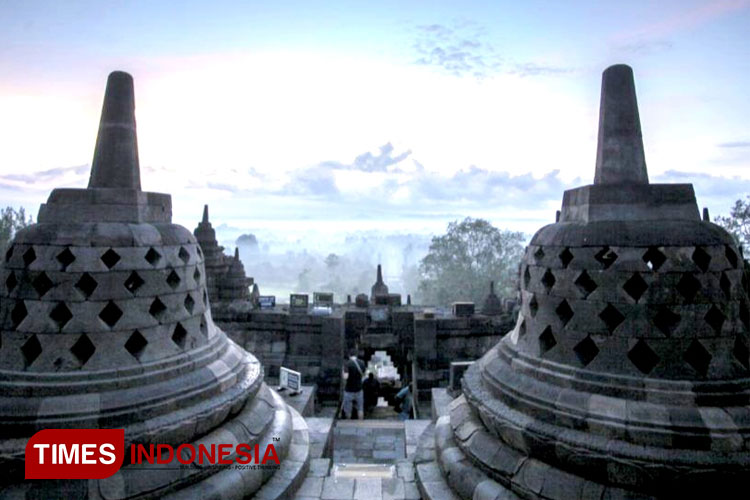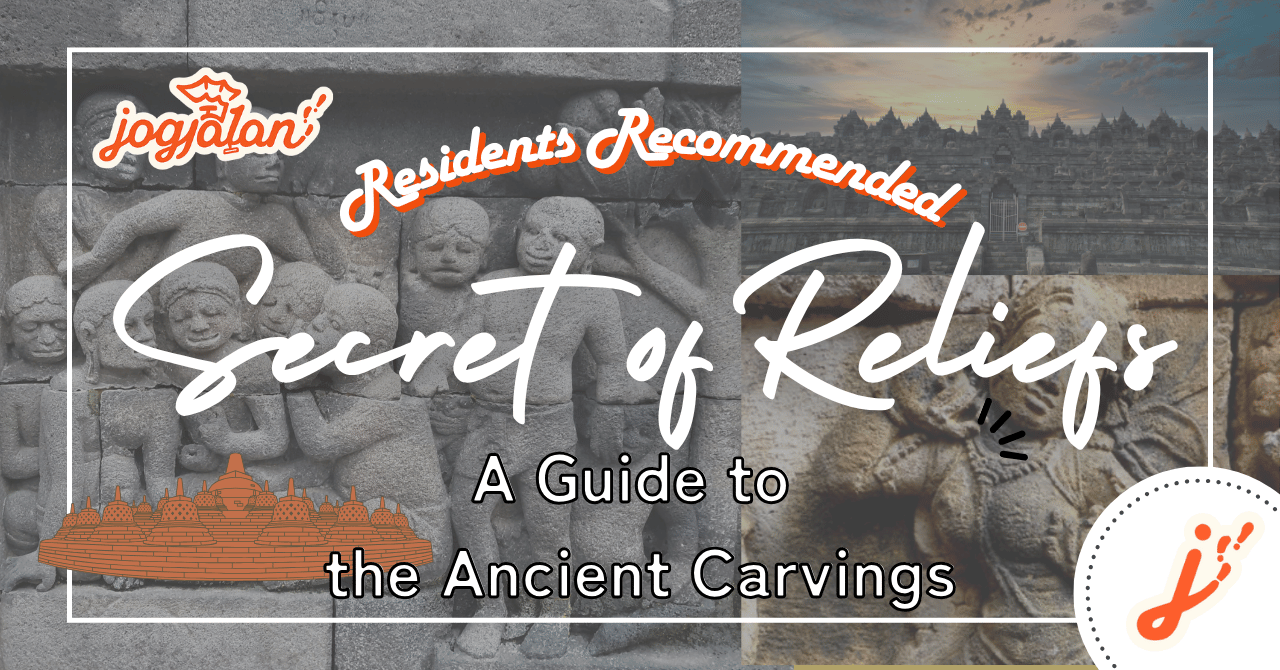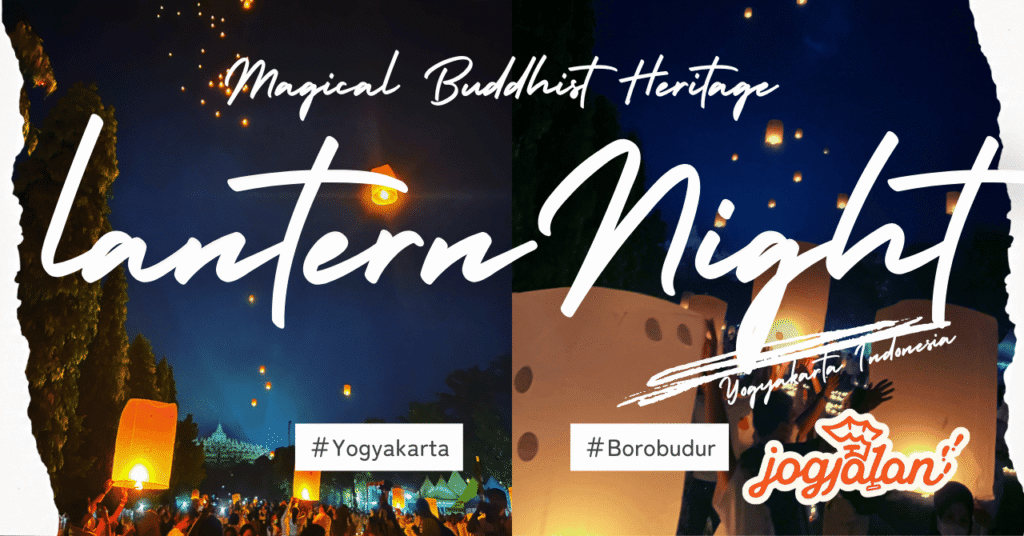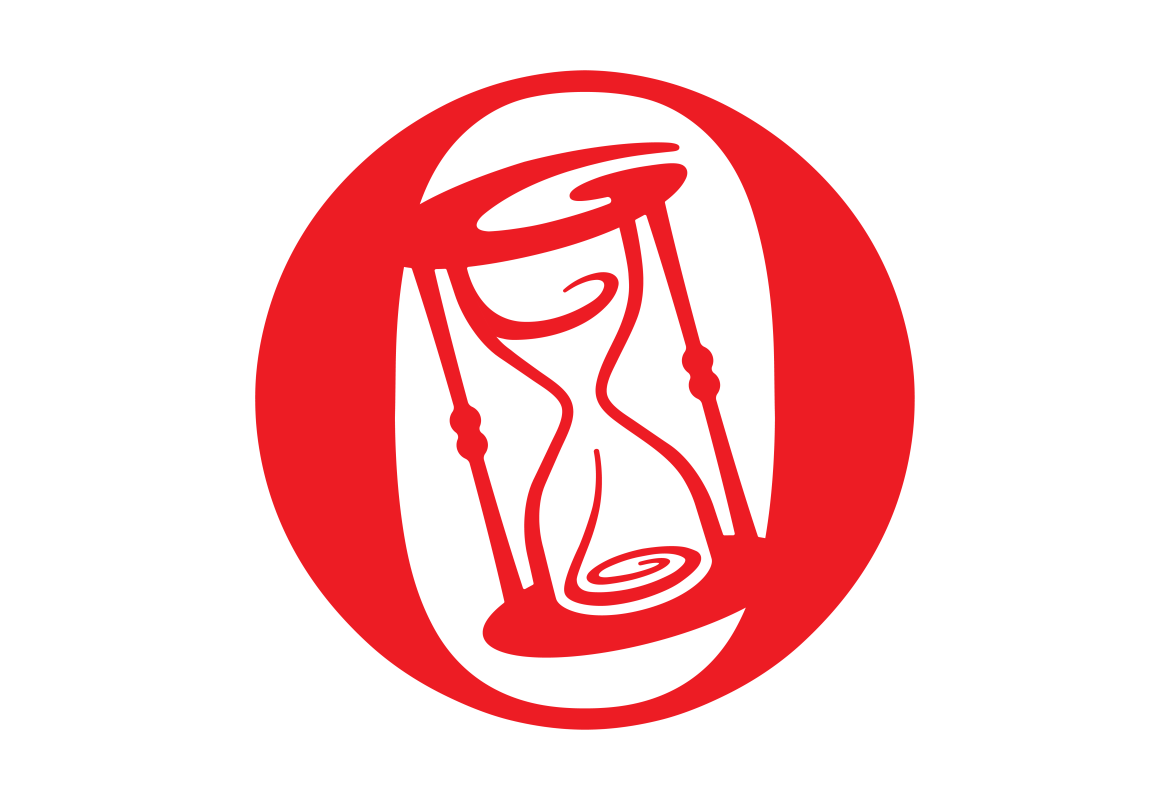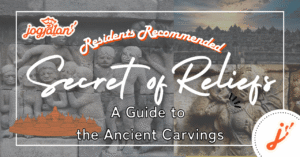
I came to Borobudur, a World Heritage site…
I was moved by the sheer scale of the structure, but there are so many reliefs on the walls, and I wanted to know more about them…
It’s difficult to interpret the reliefs just by looking at them.
I think you’ll enjoy them even more if you know the background of these reliefs, so I’ll introduce them in detail!


The Stories Left in the Reliefs
Borobudur Temple was built in the 8th century, and its walls are decorated with over 2,670 reliefs. Each relief tells a beautiful story of daily life at that time.
Arrangement and Overall Plan of the Reliefs
The total of approximately 2,670 reliefs are broadly divided into seven stories.


Karmawibhangga
Karmawibhangga depicts the endless chain of human life and death (reincarnation).
Therefore, a highlight is that many of the reliefs depict the sufferings and important matters of this world.
These murals are drawn on the walls of the base of Borobudur.


This relief depicts people gossiping (especially about celebrity news).
The mural is inscribed with the word “Virupa” in Old Javanese.
It is said that this mural expresses the saying, “Those who love to gossip will be reborn with ugly faces.”



It seems that people have loved gossip for over 1,000 years…
Suddenly, I feel a strange kinship with the reliefs lol
Right? And the teaching that gossip is not good has been around for a long time too…
It’s interesting. I’m sure the culture of gossip will continue for another 1,000 years lol
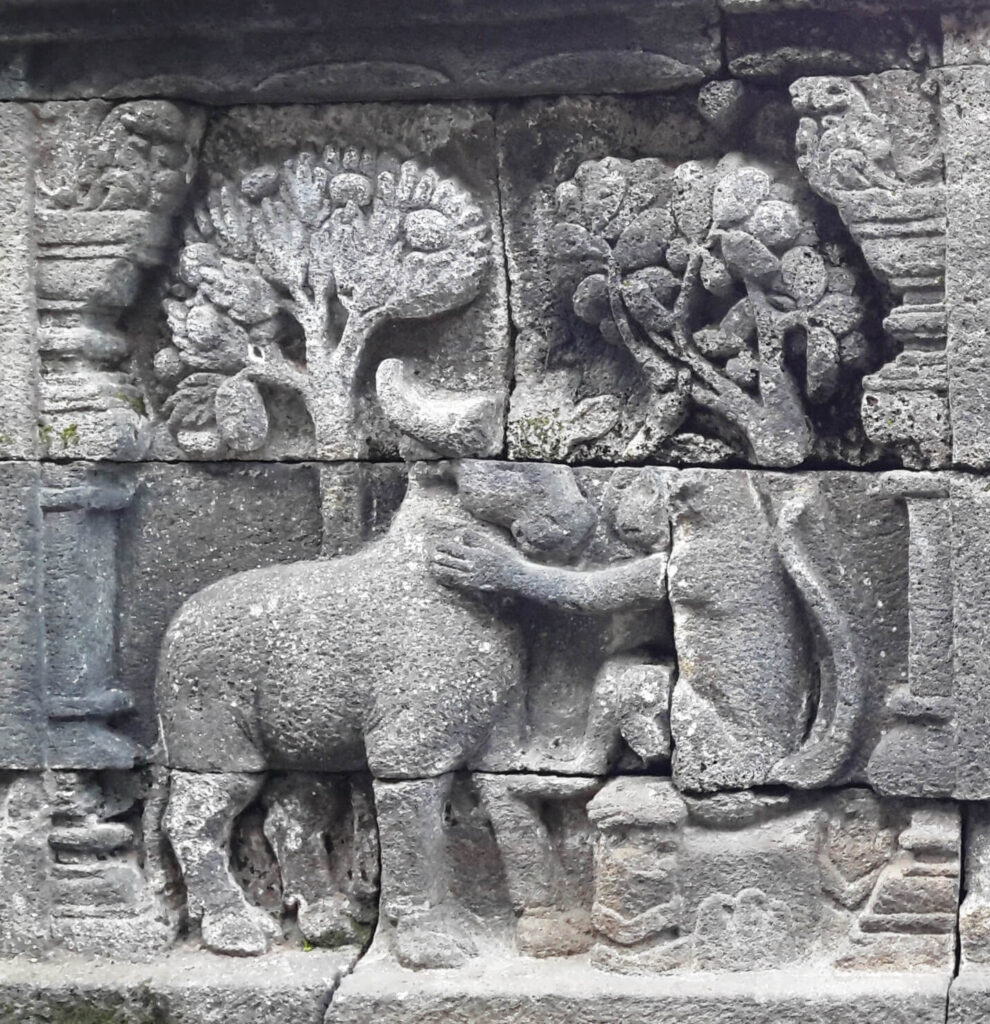

This is a relief that expresses true friendship.
One day, a demon was about to eat a monkey. The defeated monkey told his fate to his buffalo friend. The buffalo comforted the monkey and said he would offer himself instead, as he was bigger and tastier.
At that moment, the monkey and the buffalo met the demon. Seeing this, the demon was so moved by the buffalo’s kindness that he left.
It’s a very nice story, isn’t it?
It’s difficult to understand just by looking at the relief…
Dewata Penjaga
Reliefs of guardian deities are carved on the entrance doors to protect the monument.
This mural is drawn on the outside of the first level.
Avadana
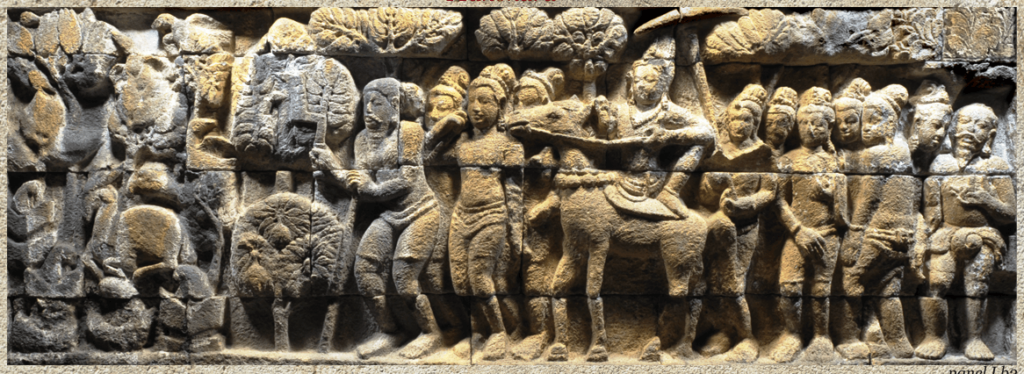

Avadana, or Divyāvadāna, reflects noble deeds (especially divine stories).
The original story may be one of the first Buddhist texts to be written down, but this particular collection of stories is not attested before the 17th century. The collection contains stories in which the Buddha explains to a group of disciples how a particular individual came to have a particular karmic result in the present due to actions in a previous life.
Jatakamala
Jatakamala is the story of the birth of the Bodhisattva, a previous life of the Buddha.
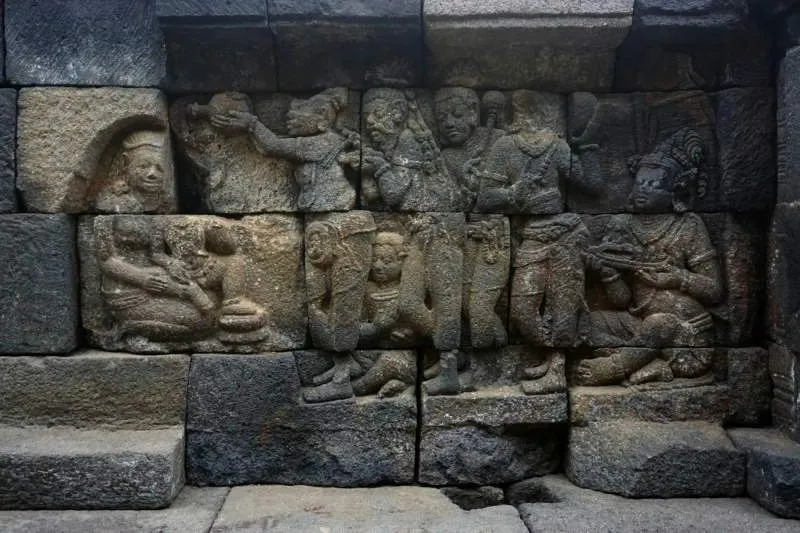

The relief above is the story of the birth of the Bodhisattva. The Bodhisattva was born into a virtuous and spiritually diligent Brahmin family. In his mother’s arms, the young Bodhisattva is blessed by a Brahmin priest, and his father also brings offerings to the priest.
Manohara


Manohara is the Kinnari (half-woman, half-bird) heroine of one of the Jataka tales. Manohara and Prince Sudhana marry, and this legend appears in the “Divyāvadāna (Avadana).”
This story is reported in the literature of Southeast Asian countries, and similar stories about a bird maiden and a human man are also found in East Asia.
A relief reflecting the marriage vows of Manohara and Sudhana.
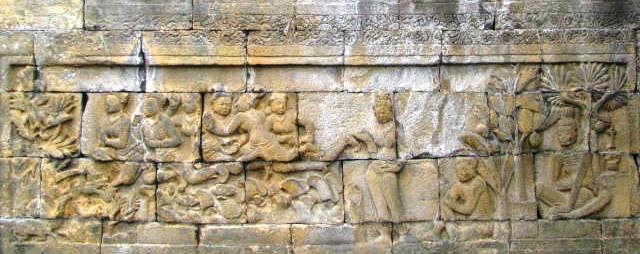

Lalitavistara
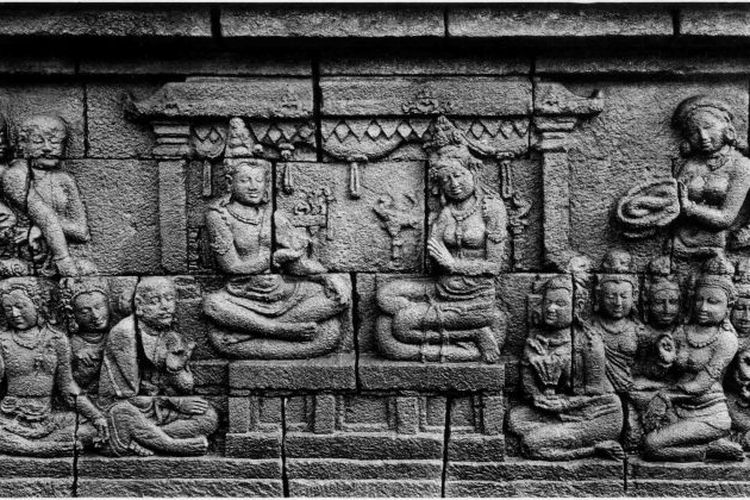

The Lalitavistara reflects the life of Shakyamuni in 120 panels, following the story found in a Sanskritized Prakrit text.
Jataka
The Jatakas are stories written for everyone, especially children, to enjoy.
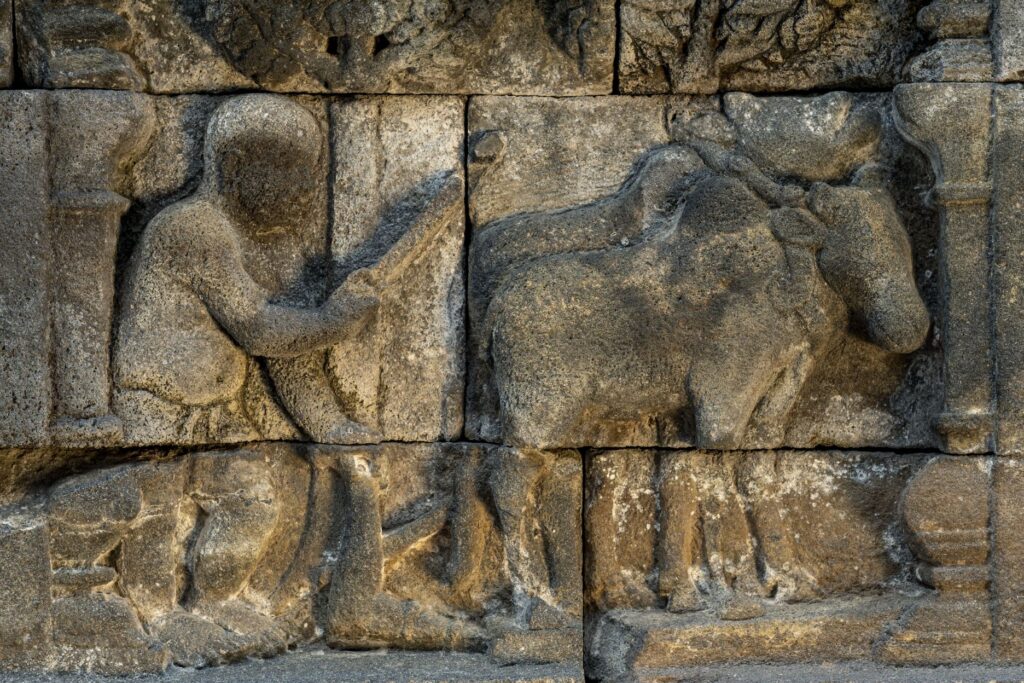

On the first level of the walls of Borobudur Temple, there is a series of reliefs that tell of the events and deeds of the Buddha in his animal forms before he was born as Siddhartha. This series of panels consists of dozens of stories and is called the Jataka reliefs, which comprise 500 reliefs arranged in upper and lower rows on the first level of the walls of Borobudur Temple.
Of the 34 identified Jataka stories, the Jataka fable stories will raise 13 other fables whose presence in the Jataka reliefs contains moral teachings and moral messages of virtue through fable stories.
In addition to being a reference for moral teachings, the depiction of animals in the Jataka reliefs is also said to be a database of Indonesia’s rich biodiversity from the past.
Gandavyuha


The Gaṇḍavyūhasūtra is one of the major scriptures of the Mahayana tradition and is available in Tibetan and Chinese translations, in addition to the original Sanskrit. In Nepal, it is counted as the fifth of the nine major scriptures of the Mahayana tradition.
The Gandavyuha murals occupy the majority of the reliefs at Borobudur, and these reliefs are depicted from the second to the fourth levels.
Top Level: Stupa
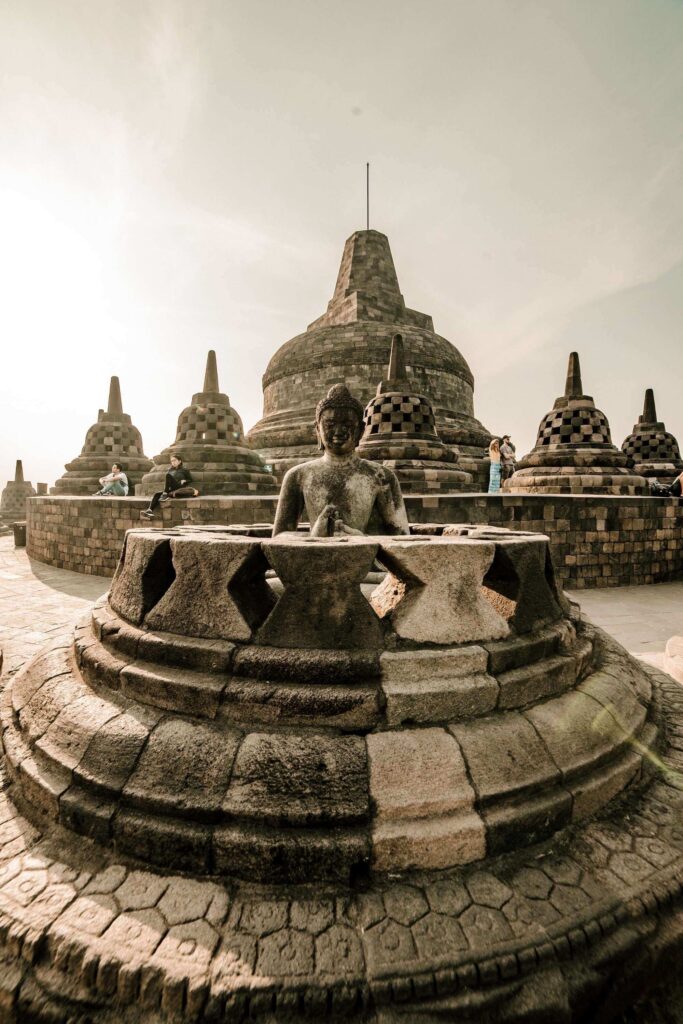

On this top level, there are 72 stupas symbolizing the highest spiritual attainment. Each stupa houses a Buddha statue.
This level represents the formless world, or the divine world, and reflects the attainment of enlightened individuals or instructors.
Although no reliefs telling a detailed story remain at this level, the stupas symbolize a higher spiritual level and the ultimate goal in Buddhism.
The stupas represent the attainment of enlightenment and liberation from all worldly desires and suffering.
Summary
We’ve introduced the reliefs of Borobudur. What did you think?
Perhaps the most enjoyable part is the reliefs at the base, which allow you to imagine life 1,000 years ago. Please let your imagination run wild and enjoy them!
I have written many other articles about Borobudur.
Please be sure to check them out as well!
References
“Adegan dan Ajaran Hukum Karma pada Relief Karmawibhangga” – Balai Konserbasi Borobudur
https://repositori.kemdikbud.go.id/12651/1/ADEGAN%20DAN%20AJARAN%20HUKUM%20KARMA%20PADA%20RELIEF%20KARMAWIBHANGGA.pdf
